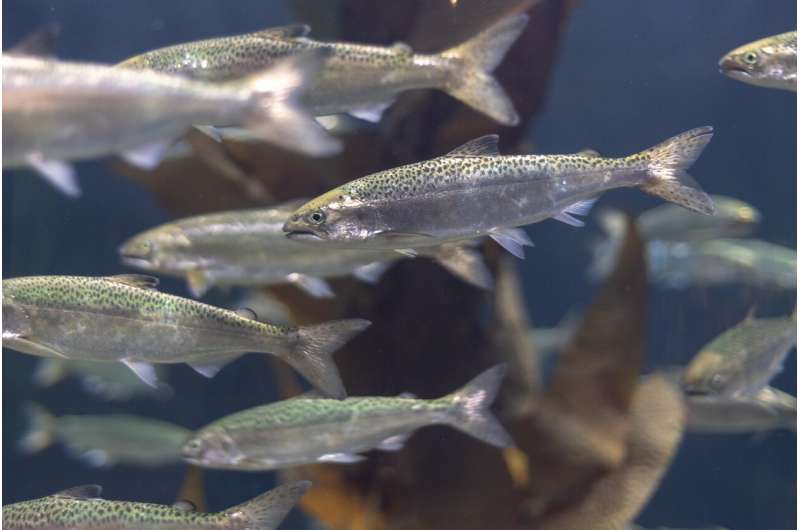This article has been reviewed according to Science X's editorial process and policies. Editors have highlighted the following attributes while ensuring the content's credibility:
fact-checked
peer-reviewed publication
trusted source
proofread
Study finds increasing frequency and scale of mass mortality events among farmed salmon since 2012

The frequency and scale of mass mortality events—events where large numbers of organisms die in short periods of time—among farmed salmon have increased since 2012, according to a study published in Scientific Reports.
Gerald Singh and colleagues analyzed salmon mortality data from Norway, Canada, the UK, Chile, Australia, New Zealand—countries that produced over 92% of the world's farmed salmon in 2021—between 2012 and 2022.
They identified 865 million instances of salmon mortality during this period and found that both the frequency of the top 10% highest mortality events and the maximum number of fish killed in mass mortality events within Norway, Canada, and the UK increased throughout the decade.
The authors estimate that the potential maximum losses for a single mass mortality event are 5.14 million fish in Norway, 5.05 million in Canada, and over 1 million in the UK. They estimate that the potential maximum annual losses from mass mortality events are 8.19 million fish in Chile, 4.39 million in New Zealand, and 1.55 million in Australia.
The authors speculate that increases in the frequency and scale of mass mortality events among farmed salmon may increase with the adoption of technologies and production practices aimed at intensifying salmon production in combination with increases in the variability of ocean environments due to climate change.
Examples of such technologies include using artificial intelligence and cameras to monitor fish and identify potential disease outbreaks, and conducting salmon farming in offshore or exposed sites.
They suggest that while new technologies and practices intend to reduce risks for salmon farming, they may also justify production in settings that could potentially expose greater numbers of fish to hazards that can contribute to mass mortality events.
In addition to the deaths of large numbers of fish, the authors caution that mass mortality events may have negative consequences for the salmon farming industry and the communities that depend on it.
More information: Gerald G. Singh, Quantitative analysis of mass mortality events in salmon aquaculture shows increasing scale of fish loss events around the world, Scientific Reports (2024). DOI: 10.1038/s41598-024-54033-9. www.nature.com/articles/s41598-024-54033-9
Journal information: Scientific Reports
Provided by Nature Publishing Group




















